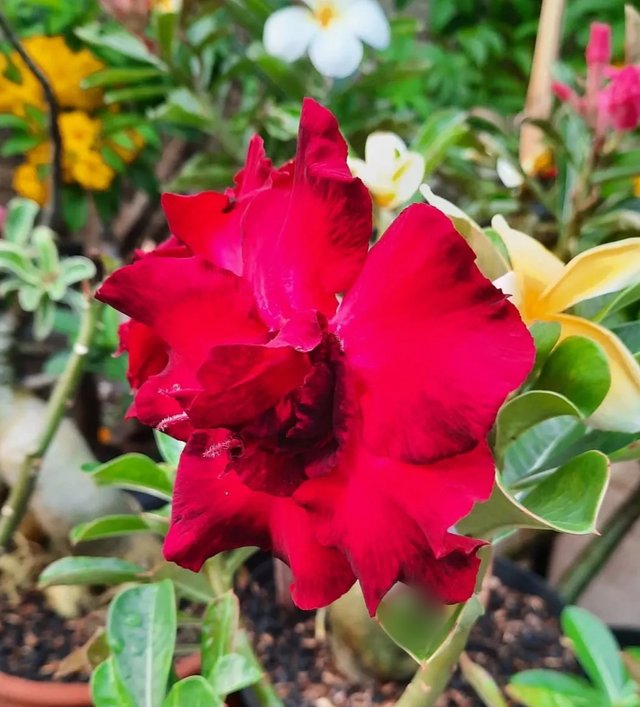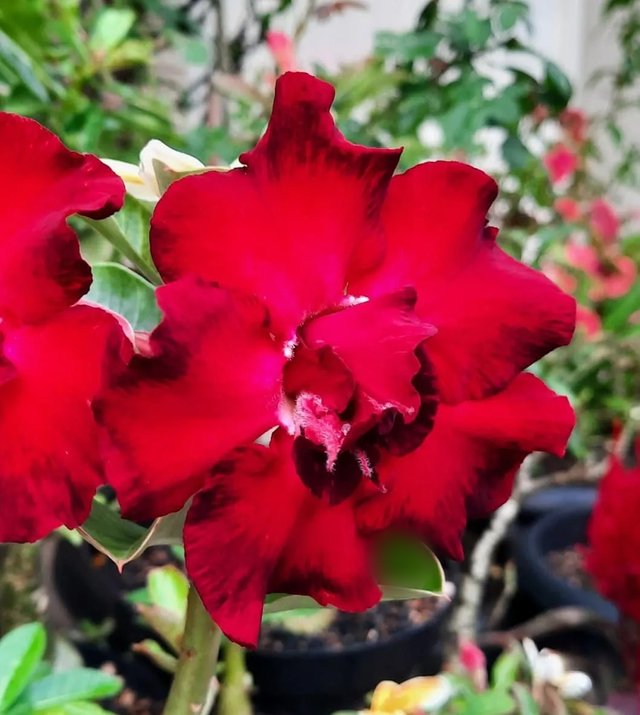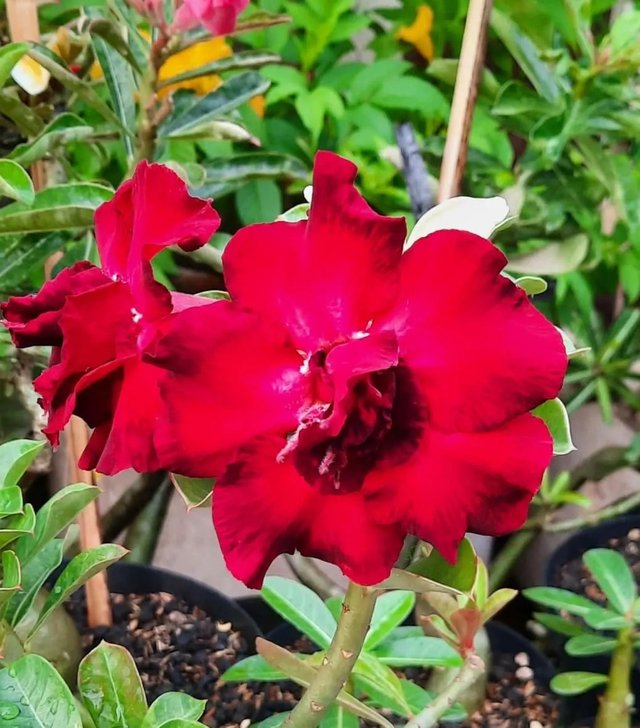So Beautiful Adenium Obesum Flower
Adenium obesum – The Desert Rose: A Stunning Succulent with Exotic Appeal
Adenium obesum, commonly known as the Desert Rose, is a striking succulent plant native to the arid regions of Africa and the Arabian Peninsula. Renowned for its thick, swollen trunk, vibrant flowers, and ability to thrive in harsh environments, this plant has captured the hearts of gardeners and plant enthusiasts worldwide.
Botanical Background
Scientific Name: Adenium obesum
Family: Apocynaceae
Common Names: Desert Rose, Mock Azalea, Impala Lily, Sabi Star
Origin: Eastern and Southwestern Africa, Arabian Peninsula
Adenium obesum is a member of the dogbane family, which includes other notable genera such as Nerium and Plumeria. Like its relatives, it exudes a milky latex sap that can be toxic if ingested, making it important to keep the plant away from pets and small children.
Appearance and Growth Habit
The Desert Rose is most recognizable by its thick, gnarled stem that acts as a water reservoir—an adaptation that helps it survive in dry climates. This swollen base, or caudex, makes it a popular subject for bonsai-style cultivation.
Its glossy green leaves are typically clustered at the ends of the branches, creating a lush contrast to the otherwise stark appearance of the trunk. The real show-stopper, however, is its flowers: trumpet-shaped blooms in shades of red, pink, white, and even bi-color. These flowers can appear multiple times a year, especially when the plant is given ideal growing conditions.
Cultivation and Care
Light:Adenium obesum thrives in full sun. It needs at least 6 hours of direct sunlight daily to promote healthy flowering and caudex development.
Soil:Well-draining soil is essential. A cactus or succulent mix works well, or you can create your own by combining potting soil with sand, pumice, or perlite.
Watering:Though it is drought-tolerant, Desert Rose prefers a careful watering routine. During the active growing season, water thoroughly but allow the soil to dry completely between waterings. In the dormant winter season, watering should be minimal or stopped altogether to prevent root rot.
Temperature:It loves warm weather and should be protected from temperatures below 50°F. In colder climates, it is best grown in pots that can be brought indoors during the winter.
Fertilization:Feed with a balanced, water-soluble fertilizer every 4-6 weeks during the growing season to encourage lush foliage and abundant blooms.
Pruning:Pruning encourages branching and a more compact shape. It’s best done in early spring before new growth begins.




%20(9).jpeg)